Sometimes, to beat the rather mundane blue and black ink colors of your fountain pen, the easiest escape is in using a combination of the two colors. And when the ink has iron-gall-like properties, it is all the more enough to amuse yourself with.
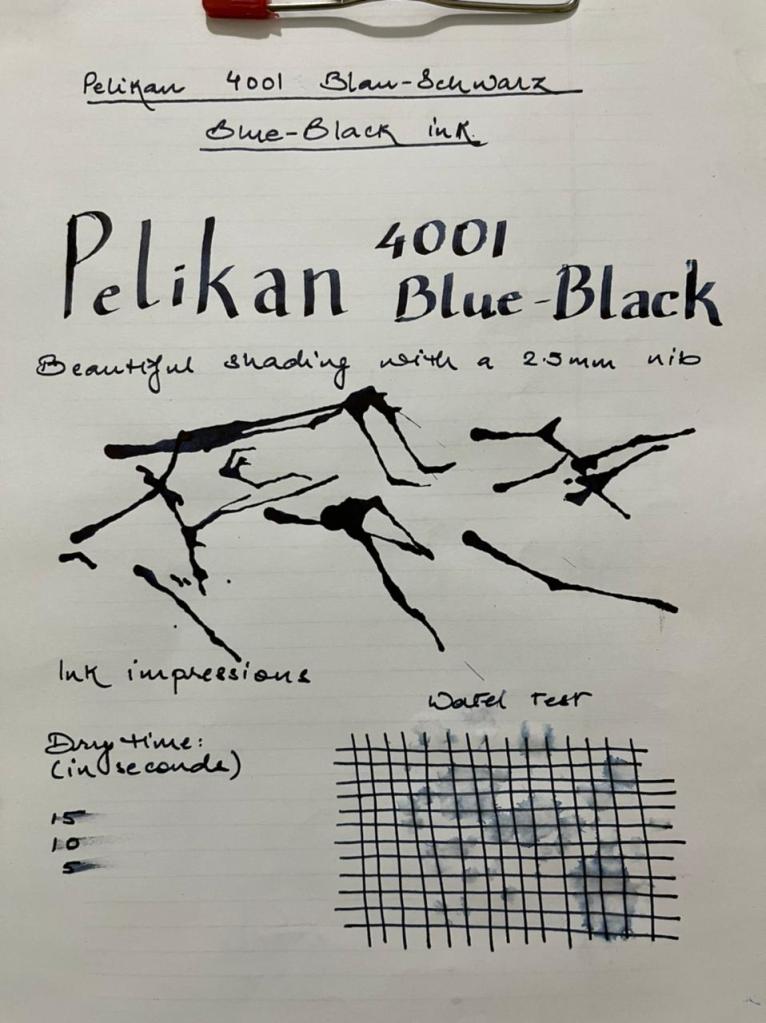
Shade and swab
The ink has a good, rich color and shades beautifully as you write through pages. It has the right combination of the extremes of blue-black. So, it goes from the liveliest of midnight blues to the smoothest shades of blue-grey.
This is a shading ink and not a sheening one. So, despite how much amount of ink I poured on the paper, I could not find any signs of either purple or blue.
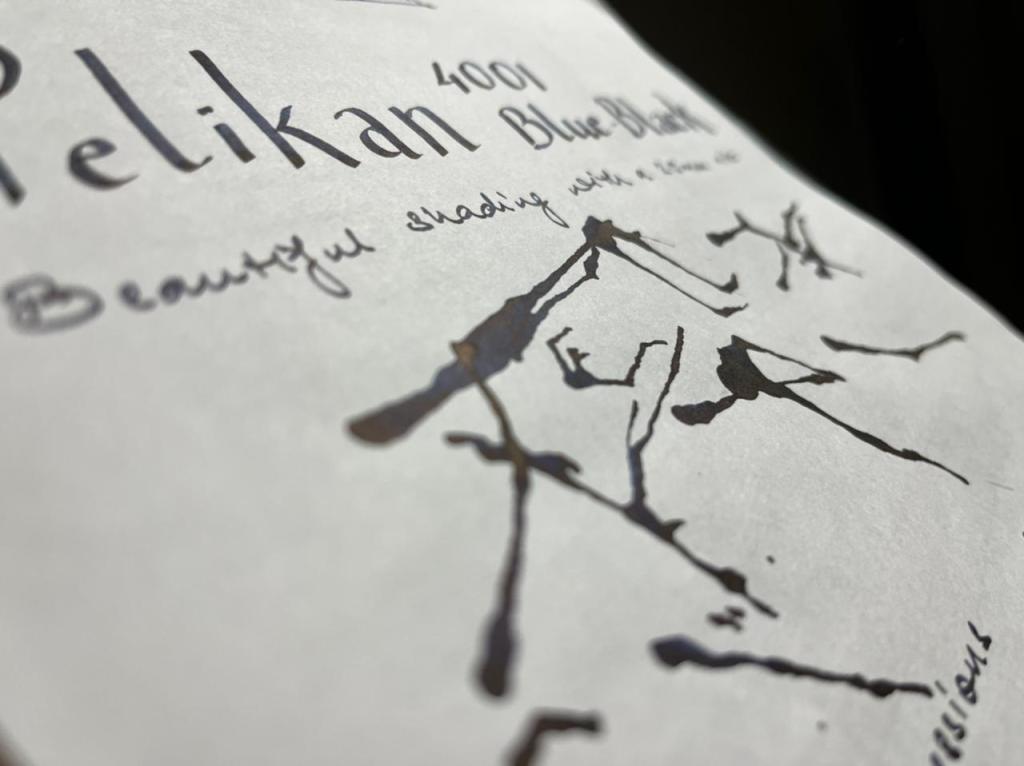
Also, I find this to be correctly leaning toward the blue-grey side. There are a few blue-blacks that I find to be bluer (and sometimes, more blue-green-black) than just blue-black.
Even on the normal notebook and photocopy paper, I don’t see any signs of feathering or bleedthrough when writing. For reference, note that I am using a Broad nib for the writing sample.
Drying time and water resistance
The ink takes anywhere between 20-35 seconds to dry depending on your paper choice. On an everyday, photocopy paper, it took 15 seconds. But on a more fountain-pen-friendly paper, it took 30-ish seconds to dry.
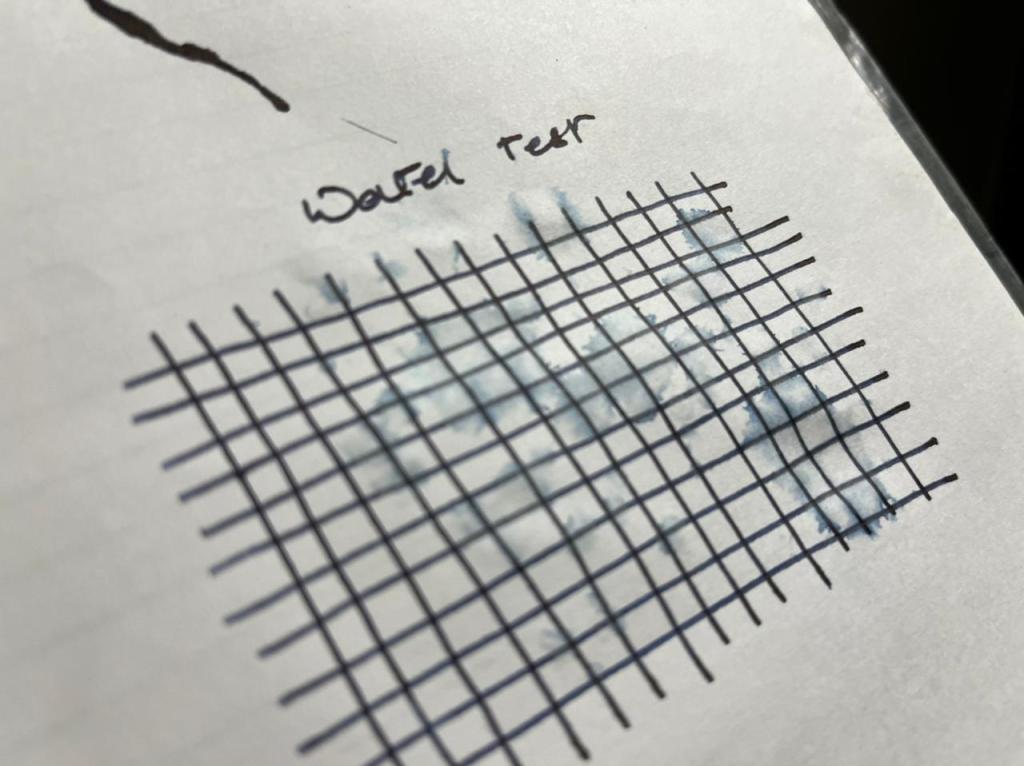
Even though it is a bit on the drier side, I am a bit shocked (pleasantly, that is) to see that it still takes that much time to dry. The sample was left to dry for at least one full day before testing.
It is fairly water-resistant, which means it is relatively safe to use for your office work. I would not call it waterproof, but it has much better water resistance than some of the inks I have used in the past.
The ink might look darker in the photographs, but it (perfectly) leans towards blue.
Observations and conclusion
I have used it in two pens in which the ink has behaved completely differently. For the ink tests, I used my Magna Carta Denima (M) and Guider Medium Ebonite (B) on regular photocopy paper. In Denima, the shading didn’t come through.
When the nib was sufficiently wet, I got a dark shade. But when the nib was starving, I got a lighter shade. While this should be normal for any ink-paper-pen combination, I found that the ink dried faster in my Denima. I never had such an issue with my Denima before; it never skipped and I never had a hard start before. But now I do.

On the flip side, my Guider Medium Ebonite is a gusher. It has a broad nib that writes like it is a Double Broad. Although I tuned the nib a bit, I still see that the nib is sufficiently wet to produce darker shades of letters as I write.
What surprises me is that even though the ink is drier, it doesn’t behave so when I use it in a pen with a broad nib. I can safely conclude that that is so because almost all German pens use one-size broader nibs when compared with Japanese pens. So, a medium nib on a German pen will behave like a Broad nib on a Japanese pen.
To make up for this, I assume, Pelikan has made its Blue-Black just a little bit drier. And, therefore, it doesn’t misbehave on my Guider Medium that dons a Broad nib. I’d like to reserve this ink for my Guider pen, but I will buy a wetter ink for my Denima. Maybe it is time for me to try another blue-black ink. This time, though, I am thinking of buying Japanese ink. I think it will be Pilor Iroshizuku Shin-Kai.
Overall experience
I bought this ink from writeway.in. My shopping experience was smooth. The site didn’t charge me anything for nationwide shipping. Even though the 30ml bottle was a bit overpriced, I didn’t mind paying extra, since there wasn’t any minimum order price to qualify for free shipping.
Although, I will say I am a bit disappointed with the ink. It is a lot drier than I expected. But I still love how it brought one of my smoothest writers back into my pocket. What’s more? The ink made me learn an invaluable lesson: use German inks for pens with Broad or Double Broad nibs. 🙂
I will be curious to know your experience with the Pelikan inks, especially the 4001 series, Blau-Schwarz ink.
Happy writing.


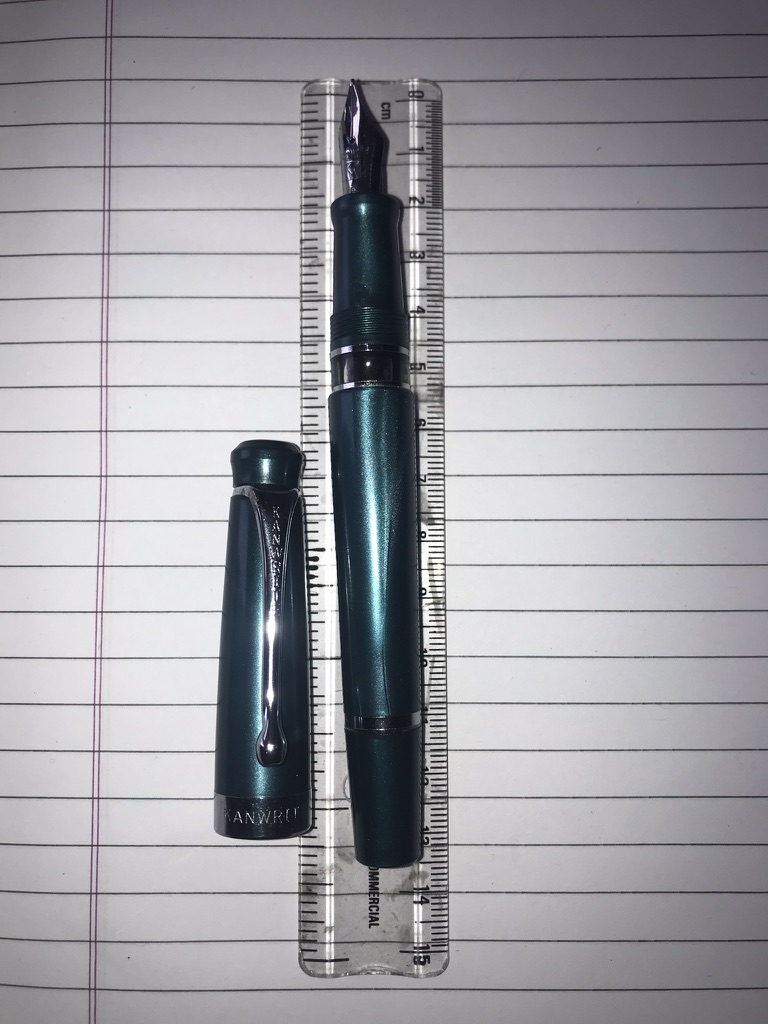





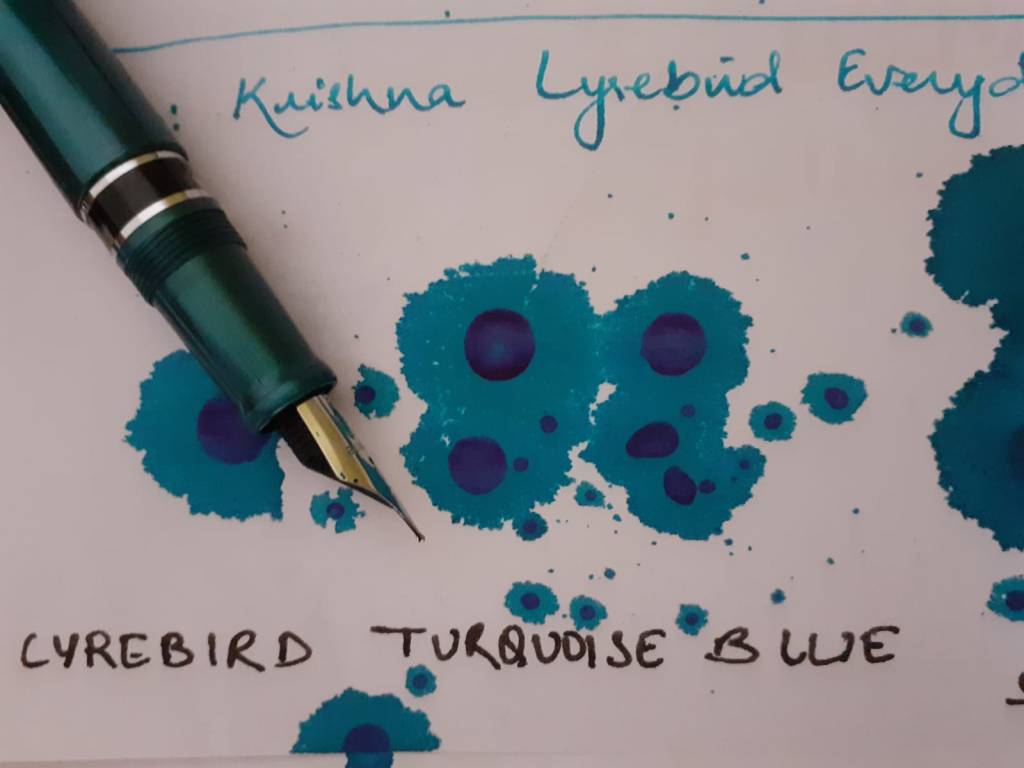

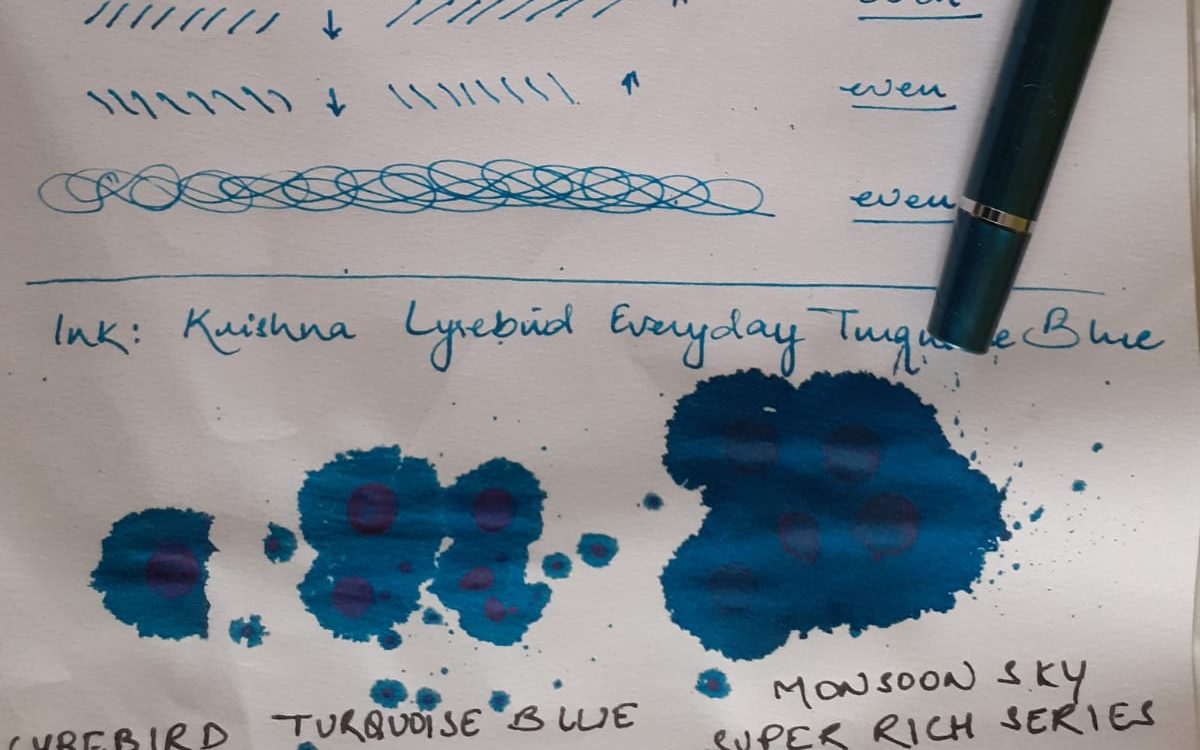





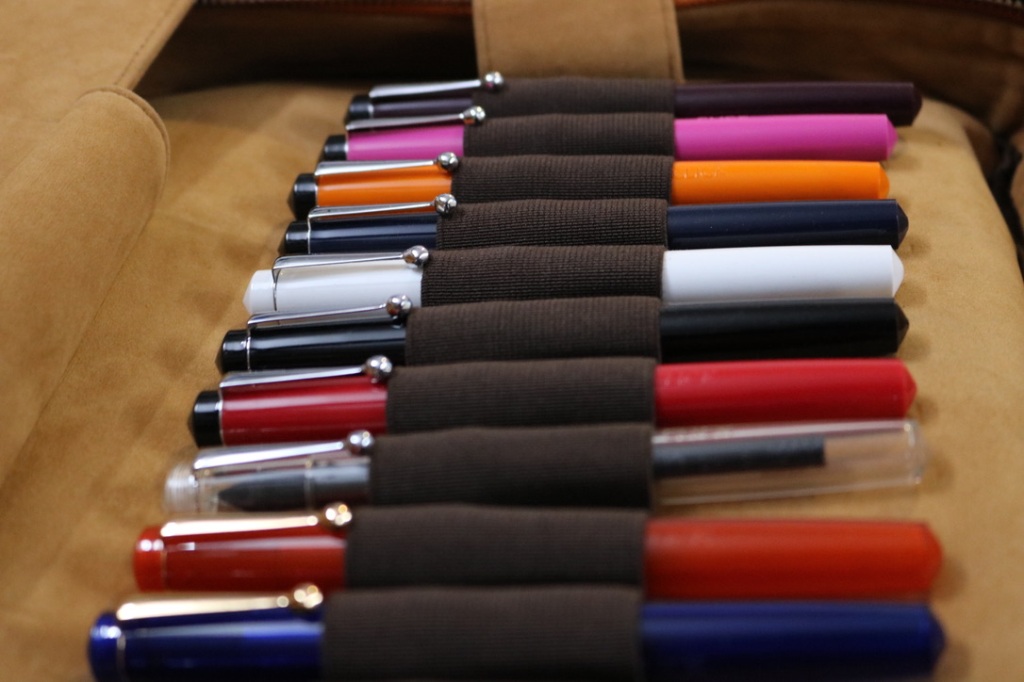












You must be logged in to post a comment.